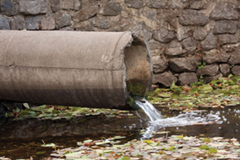Ensuring safe sewage treatment systems
 Septic tanks and other domestic waste water treatment systems will face inspection from mid-2013. eolas analyses the EPA’s plans.
Septic tanks and other domestic waste water treatment systems will face inspection from mid-2013. eolas analyses the EPA’s plans.
A national inspection plan was stipulated in the June 2012 Water Services (Amendment) Act. A public consultation which sought views on how the inspections should be carried out ended on 31 October.
The water services legislation was implemented in response to a 2009 European Court of Justice ruling that Ireland was failing to comply with the EU Waste Framework Directive. Environment Minister Phil Hogan has said that the Act will help protect the environment, thereby creating “positive economic benefits for the tourism, recreation, agricultural and food-producing sectors, all of which rely on clean water.” Clean water is also “vital for attracting inward investment and to support water hungry sectors such as pharmaceuticals and ICT,” he added.
This national inspection plan will focus particularly on high-risk septic tanks such as those close to drinking water sources, bathing waters and fisheries. Properties connected to systems in these areas which have not been registered by 1 February 2013 and homes without sewage facilities will be prioritised for inspection.
Phil Hogan announced in February that householders could register their septic tanks for a fee of €5 until 28 September. That cost has now risen to €50. Inspections will begin following the February deadline and will be carried out by local authorities under EPA supervision.
A frequently asked questions page and an animation on the EPA website outline how to check and maintain septic tanks. It is hoped that the public will make the necessary repairs prior to inspections being carried out. A risk-based approach will be taken during inspections, following a ‘source – pathway – receptor’ model. This means that inspectors will assess the potential source of pollution (i.e. a septic tank), a pathway for the pollution to follow such as the sub-soil, and receptors such as rivers.
Inspections will include monitoring the local environment, assessment of sewage systems, analysis of sludge management and inspections resulting from complaints. Specifically, inspectors will check that the system is not leaking or discharging to surface water without a licence, that it does not accept rainwater or clean surface water, is properly operated and maintained and is de-sludged at appropriate intervals (i.e. at least once a year).
Householders will be notified of an inspection 10 days in advance and the results will be sent to them within 21 days. If the system is a risk, an advisory notice will be issued by the local authority and the householder will have to update or repair it. If they disagree with the advisory notice, a follow up inspection can be arranged for a fee of €20.
According to the 2011 census, 437,652 private households (26 per cent) are connected to individual septic tanks (see table).
The Department of the Environment, Community and Local Government has stated that householders will not be required to impose modern standards on older systems or to acquire additional land to facilitate remediation work. The possibility of financial assistance “will be kept under review pending the commencement of inspections.” The department has stated: “Any grants scheme introduced will have to have regard to the overall budgetary situation and the financial position of the individual households concerned.”
|
||||||||||||||||





